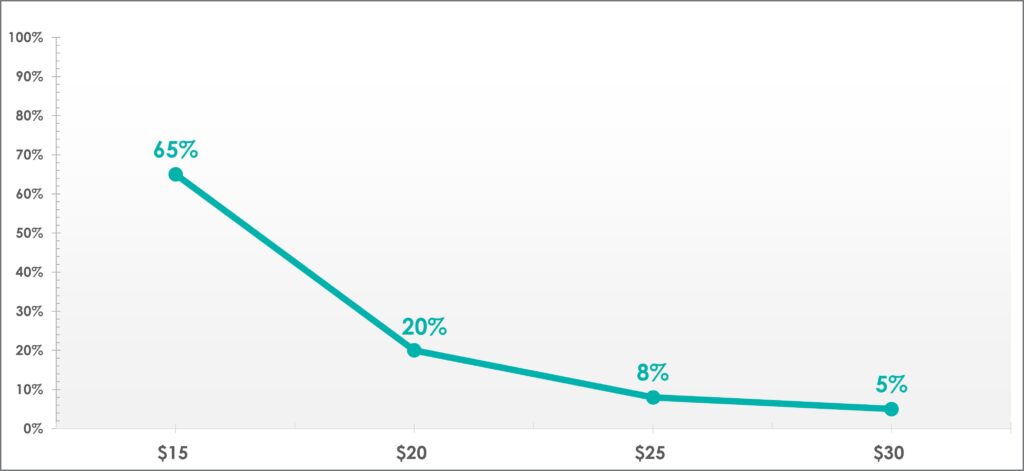
Research Services
Pricing Research
Finding the
Right Price
Are you in the midst of developing a new product or service and not sure how to price it? We can help.
At C+R, we’ve been conducting pricing research for years; we’ve helped countless brands determine the optimal price point for maximizing their profit, revenue, or market share. Our toolbox is packed with different approaches to help you find the right price. All our tools are survey-based, so we can customize the approach to meet your unique needs.
Our pricing
assessment toolbox
Here’s an overview of each pricing assessment approach. Let us know how we can help you!
Gabor-Granger Price Laddering
Assesses likelihood to purchase at 3 to 5 specific price points. Likelihood to purchase is weighted and combined with price points for take rate and revenue curves.
Respondents are randomly assigned a starting point for price and asked purchase likelihood. If definitely would buy, they move to the next higher price. Otherwise, they evaluate a lower price.
use this approach when you…
- know what your specific price points will be
- have a short survey


Van Westendorp Price Sensitivity Meter
Determines a range of acceptable prices by asking respondents to explicitly name prices that correspond to different value levels of a product:
- too expensive
- getting expensive
- good value
- too cheap
In addition to the questioning above, we recommend that our clients add in purchase interest at the good value and getting expensive price points (modified van Westendorp).
use this approach when…
- prices of similar products in market are known by consumers
- trying to understand the relationship between quality and value
- understanding consumers’ price perception is important
Discrete Choice
Price points are embedded in a choice or simulated shopping exercise.
- product features included to determine the tradeoffs between price and features
- competitive brands included to determine pricing in a competitive context
- price elasticity curves are provided, which show the sensitivity of demand to change in price
- an Excel-based simulator is provided to explore “what-if scenarios”
use this approach when…
- it’s important to determine the most realistic and reliable way to optimize prices
- competitive brands and products can be defined
- trying to simulate shelf sets, revenue, profit, and optimize lines

Example Price Elasticity Curve

proven experience
featured pricing
research case studies

